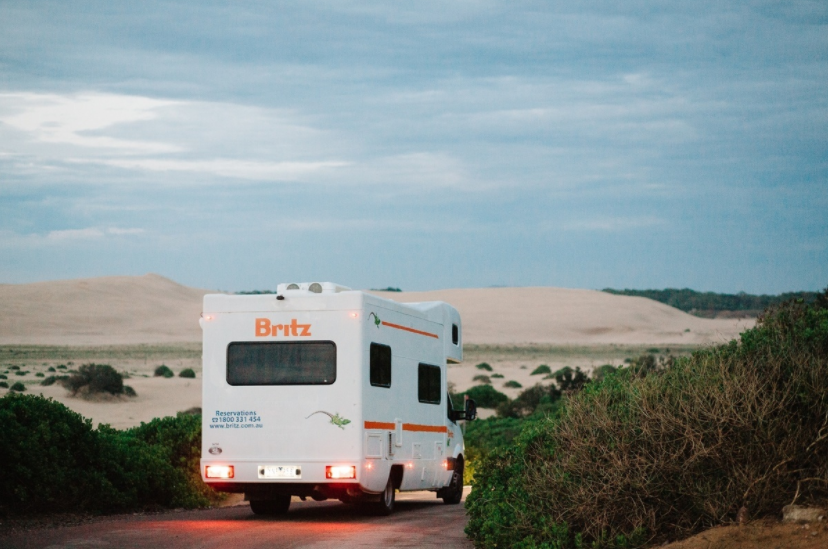Tourism Holdings eyes 'connected RV'


Tourism Holdings Limited (THL) started out as a helicopter sightseeing business, but as one of the biggest parts of its business is now RV rentals following a handful of acquisitions in the US, THL now considers itself the largest RV rental company in the world.
Headquartered in Auckland, THL's operations span New Zealand, Australia, and the United States.
Speaking with ZDNet while at AWS re:Invent in Las Vegas last month, THL general manager of IT Mark Taylor painted a picture of a bricks and mortar business that isn't shying away from using technology to leap ahead of its competitors, leveraging the cloud to prepare for a future centred on a connected RV.
Although THL has had telematics devices in just about every vehicle in Australia and New Zealand for the last two years, the focus has mainly been on safety, rather than innovation and exploring the possibilities of its data.
As vehicles are often too tall for bridges in Melbourne, THL uses telematics to push out low bridge warnings by geofencing areas in the CBD, for instance.
"We also were able to track if they were in areas they shouldn't be -- Australia's got quite a few very harsh areas that we know people can get stuck in so we're able to track where they are," Taylor explained. "We've actually reduced our speeding incidents by passing on the warnings to the drivers that they're speeding."
THL manufacturers its own vehicles, which gives it the ability to look into the development of electric vehicles.
"The limitation is the distance that we can actually get the vehicles to go," Taylor said. "But that's just a matter of time."
But where the innovation starts to shine through is in the road trip experience itself with the idea of the connected RV, and the Internet of Things.
"The intention we want to get to is having a vehicle that we know there's an issue or an error before they do, so we can then proactively send those messages to the driver and say 'Look we know you're driving around Taupo and we know you've got an issue with your lights, these guys are ready for you'," Taylor explained.
"That whole connected vehicle -- that's a really interesting project.
"We see a lot of benefit for us just on the repairs and maintenance and being able to proactively have all these things alerted to us beforehand. The small gains start to add up and really turn into a compelling argument."
In addition, THL is looking at things like driver scorecards, hoping to encourage good driving behaviour, in a sharing economy-like manner.
"It's something we know by doing it is going to have a knock on effect of safety, first of all, it's without a doubt one of the biggest benefits," he added. "But also from our point of view we know that the vehicles are going to be treated a little bit nicer and we'll get a lot of use out of them and reduce repairs and maintenance."
With a fleet of around 6,000 vehicles, Taylor said the scale required for data collection is only achievable via the cloud.
Using its data and the cloud, THL was able to work with the NZ Transport Agency to gain a better understand of danger zones for drivers in the country.
"Overlaying the accident black spots around New Zealand with our driver data -- something like 83 million records -- and to get the correlations between whether it's an opportunity to again improve driver safety ... we probably wouldn't have been able to do that quickly and easily without the ability to spin-up things and just scale and burst when we need to," he added.
THL started to shift its operations into the cloud a little over three years ago, turning to Spark-owned Revera to move its kit initially off-premises.
"It was probably OK in the first year or two, but it probably was no longer the best way of doing it and as we were trying to scale beyond the NZ operation, it didn't really scale well to run in the US," Taylor explained.
"When I came in, one of my major projects was to get the migration into AWS from Revera ... initially our Revera bill was around NZ$70,000 a month and we've been gradually chipping away at that and down to about NZ$15,000 now; while AWS has gone from nothing to about NZ$35,000.
"We've had a pretty compelling reason and argument why we're doing what we're doing."
Disclaimer: Asha Barbaschow travelled to to AWS re:Invent as a guest of AWS.
MORE FROM AWS RE:INVENT
How the ABS prepared for the same-sex marriage survey using the public cloud
Given a go-live date from Prime Minister Malcolm Turnbull of around four weeks, the Australian Bureau of Statistics turned to AWS to run the online and call centre components of the same-sex marriage survey in the public cloud.
CIA to continue cloud push in the name of national security
The intelligence agency's director of digital futures has touted the partnership with AWS as one providing a 'game-changing' environment for the CIA to perform like a Silicon Valley startup while protecting national security.
An Amaysim journey: A lesson in how to use cloud to take on the big boys
With the seven year-old company completing its shift to AWS, it is able to continue tackling the Australian telecommunications and energy sectors.
How one Sheriff's Office is using machine learning to uncover persons of interest
The Sheriff's Office needed a better way to identify unknown suspects, so it turned to AWS Rekognition and now uses machine learning to locate persons of interest within a matter of minutes.
Amazon AI: The smart person's guide (TechRepublic)
Amazon offers robust AI and machine learning capabilities with AWS. Find out how Amazon AI compares to similar offerings from Google and Microsoft.